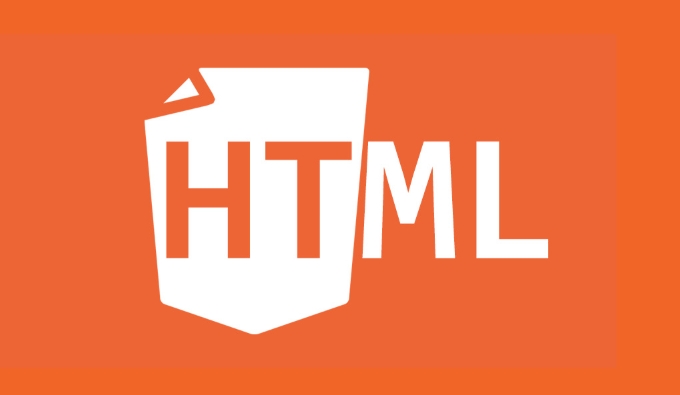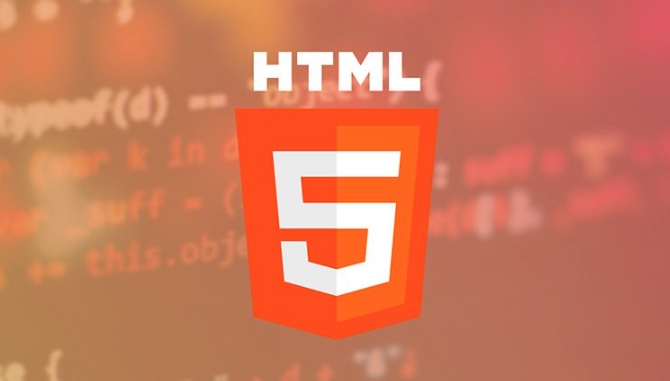When embedding images using HTML <img src="/static/imghw/default1.png" data-src="https://img.php.cn/upload/article/000/000/000/175224985484801.jpeg" class="lazy" alt="Embedding Images Using the HTML img Tag" > tags, you need to pay attention to path settings, alt descriptions and responsive processing. 1. The path settings must be accurate, distinguishing between relative paths, subdirectory paths and absolute URLs; 2. Clear and concise alt alternative text must be filled in to improve accessibility and SEO; 3. It is recommended to use CSS to control width and height to avoid layout jitter, and you can also set width or height to achieve similar scaling; 4. Optional properties such as loading="lazy" delay loading, decoding="async" asynchronous decoding, and srcset multi-resolution adaptation can improve performance and responsive effects.

In web development, the most common method of embedding images is to use HTML <img src="/static/imghw/default1.png" data-src="https://img.php.cn/upload/article/000/000/000/175224985484801.jpeg" class="lazy" alt="Embedding Images Using the HTML img Tag" > tags. It is simple and direct, but if you want to use it well, you have to pay attention to some details.

Basic syntax: src and alt are the key
The <img src="/static/imghw/default1.png" data-src="https://img.php.cn/upload/article/000/000/000/175224985748977.jpeg" class="lazy" alt="Embedding Images Using the HTML img Tag" > tag has no closed tag, it is a self-closed tag. The most basic way to write it is as follows:

<img src="/static/imghw/default1.png" data-src="image.jpg" class="lazy" alt="descriptive text">
-
srcattribute specifies the path to the image, which can be a relative path or an absolute URL. -
altattribute is an alternative text, which will be displayed when the image cannot be loaded, and is also important for SEO and accessibility.
It is recommended to fill in a clear and concise alt description for each picture, not only for aesthetics, but also for accessibility and search engine optimization.
Image path settings FAQ
Path errors are common problems encountered when embedding images. Here are some common situations and suggestions:

- If the picture is in the same directory, just write the file name:
src="photo.jpg" - If the image is in a subdirectory (such as
images/), write it as:src="images/photo.jpg" - If you reference an image on an external website, you need to use the full address:
src="https://example.com/images/photo.jpg"
A path error will cause the image to not be displayed. Usually the browser will not report an error. It can only check the network request or element status through the developer tool.
Control image size: width and height usage
You can set the width and height of the image through HTML:
<img src="/static/imghw/default1.png" data-src="photo.jpg" class="lazy" style="max-width:90%" style="max-width:90%" alt="Scenery Photo">
- The unit is pixel by default, and no
pxis required - Setting width and height at the same time can avoid page layout jitter (Layout Shift)
However, it is more recommended to use CSS to control the size, which makes it easier to manage and adapt responsively. If you set only one of width or height, the browser scales the other side.
Other practical properties (not very commonly used but useful)
Although the above attributes are sufficient in most cases, there are several options to improve the experience:
-
loading="lazy": delay loading of pictures, speed up the first screen, suitable for long pages -
decoding="async": Tells the browser to decode pictures asynchronously to improve performance -
srcset: Provides multiple resolution versions in conjunction with responsive design
For example:
<img src="/static/imghw/default1.png" data-src="small.jpg" class="lazy" srcset="medium.jpg 1024w, large.jpg 1920w" alt="City Night View">
These attributes can be selected and used according to project needs, especially for high-traffic websites or mobile-first projects, with more obvious results.
Basically that's it. Inserting images with <img alt="Embedding Images Using the HTML img Tag" > tags seems simple, but in actual development, path settings, alternative text and responsive processing are the most likely to cause problems, so you need to pay more attention.
The above is the detailed content of Embedding Images Using the HTML img Tag. For more information, please follow other related articles on the PHP Chinese website!

Hot AI Tools

Undress AI Tool
Undress images for free

Undresser.AI Undress
AI-powered app for creating realistic nude photos

AI Clothes Remover
Online AI tool for removing clothes from photos.

Clothoff.io
AI clothes remover

Video Face Swap
Swap faces in any video effortlessly with our completely free AI face swap tool!

Hot Article

Hot Tools

Notepad++7.3.1
Easy-to-use and free code editor

SublimeText3 Chinese version
Chinese version, very easy to use

Zend Studio 13.0.1
Powerful PHP integrated development environment

Dreamweaver CS6
Visual web development tools

SublimeText3 Mac version
God-level code editing software (SublimeText3)

Hot Topics
 How do I embed PHP code in an HTML file?
Jun 22, 2025 am 01:00 AM
How do I embed PHP code in an HTML file?
Jun 22, 2025 am 01:00 AM
You can embed PHP code into HTML files, but make sure that the file has an extension of .php so that the server can parse it correctly. Use standard tags to wrap PHP code, insert dynamic content anywhere in HTML. In addition, you can switch PHP and HTML multiple times in the same file to realize dynamic functions such as conditional rendering. Be sure to pay attention to the server configuration and syntax correctness to avoid problems caused by short labels, quotation mark errors or omitted end labels.
 How do I minimize the size of HTML files?
Jun 24, 2025 am 12:53 AM
How do I minimize the size of HTML files?
Jun 24, 2025 am 12:53 AM
To reduce the size of HTML files, you need to clean up redundant code, compress content, and optimize structure. 1. Delete unused tags, comments and extra blanks to reduce volume; 2. Move inline CSS and JavaScript to external files and merge multiple scripts or style blocks; 3. Simplify label syntax without affecting parsing, such as omitting optional closed tags or using short attributes; 4. After cleaning, enable server-side compression technologies such as Gzip or Brotli to further reduce the transmission volume. These steps can significantly improve page loading performance without sacrificing functionality.
 How has HTML evolved over time, and what are the key milestones in its history?
Jun 24, 2025 am 12:54 AM
How has HTML evolved over time, and what are the key milestones in its history?
Jun 24, 2025 am 12:54 AM
HTMLhasevolvedsignificantlysinceitscreationtomeetthegrowingdemandsofwebdevelopersandusers.Initiallyasimplemarkuplanguageforsharingdocuments,ithasundergonemajorupdates,includingHTML2.0,whichintroducedforms;HTML3.x,whichaddedvisualenhancementsandlayout
 How do I use the element to represent the footer of a document or section?
Jun 25, 2025 am 12:57 AM
How do I use the element to represent the footer of a document or section?
Jun 25, 2025 am 12:57 AM
It is a semantic tag used in HTML5 to define the bottom of the page or content block, usually including copyright information, contact information or navigation links; it can be placed at the bottom of the page or nested in, etc. tags as the end of the block; when using it, you should pay attention to avoid repeated abuse and irrelevant content.
 How do I use the tabindex attribute to control the tab order of elements?
Jun 24, 2025 am 12:56 AM
How do I use the tabindex attribute to control the tab order of elements?
Jun 24, 2025 am 12:56 AM
ThetabindexattributecontrolshowelementsreceivefocusviatheTabkey,withthreemainvalues:tabindex="0"addsanelementtothenaturaltaborder,tabindex="-1"allowsprogrammaticfocusonly,andtabindex="n"(positivenumber)setsacustomtabbing
 What is the declaration, and what does it do?
Jun 24, 2025 am 12:57 AM
What is the declaration, and what does it do?
Jun 24, 2025 am 12:57 AM
Adeclarationisaformalstatementthatsomethingistrue,official,orrequired,usedtoclearlydefineorannounceanintent,fact,orrule.Itplaysakeyroleinprogrammingbydefiningvariablesandfunctions,inlegalcontextsbyreportingfactsunderoath,andindailylifebymakingintenti
 What is the purpose of the input type='range'?
Jun 23, 2025 am 12:17 AM
What is the purpose of the input type='range'?
Jun 23, 2025 am 12:17 AM
inputtype="range" is used to create a slider control, allowing the user to select a value from a predefined range. 1. It is mainly suitable for scenes where values ??need to be selected intuitively, such as adjusting volume, brightness or scoring systems; 2. The basic structure includes min, max and step attributes, which set the minimum value, maximum value and step size respectively; 3. This value can be obtained and used in real time through JavaScript to improve the interactive experience; 4. It is recommended to display the current value and pay attention to accessibility and browser compatibility issues when using it.
 How do I use the and elements to provide a caption for an image?
Jun 24, 2025 am 12:45 AM
How do I use the and elements to provide a caption for an image?
Jun 24, 2025 am 12:45 AM
The standard way to add titles to images in HTML is to use and elements. 1. The basic usage is to wrap the image in the tag and add a title inside it, for example: this is the title of the image; 2. The reasons for using these two tags include clear semantics, convenient style control, and strong accessibility, which helps the browser, crawler and screen readers to understand the content structure; 3. Notes include that it can be placed up and down but needs to maintain logical order, cannot replace the alt attribute, and can contain multiple media elements to form a whole unit.






